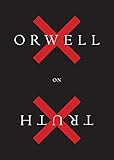It has been a year of reading in fits and starts, indeed of doing everything in fits and starts, fits and starts being the general run of things when you have a baby.
For articles I was writing, I happily revisited passages from several books, including:
- Little Women
- Elizabeth Costello
- The Garden of Eden
- Tropic of Capricorn
- Bartleby & Co.
- A Sport and a Pastime
- Yann Andréa Steiner
- NW
- To the Back of Beyond
- Charlotte’s Web




 For my next novel, I read bits of books about fathers, including letters between Wolfgang and Leopold Mozart; books about Italians, including Luce D’Eramo’s Deviation; and books about conspiracy theories and “the power of the lie,” including David Aaronovitch’s Voodoo Histories, Rob Brotherton’s Suspicious Minds, Hans Rosling’s Factfulness, and a timely new anthology entitled Orwell on Truth.
For my next novel, I read bits of books about fathers, including letters between Wolfgang and Leopold Mozart; books about Italians, including Luce D’Eramo’s Deviation; and books about conspiracy theories and “the power of the lie,” including David Aaronovitch’s Voodoo Histories, Rob Brotherton’s Suspicious Minds, Hans Rosling’s Factfulness, and a timely new anthology entitled Orwell on Truth.


 I read books that were sent to me, including Free Woman by Lara Feigel and the forthcoming Such Good Work by Johannes Lichtman. In preparation for events, I read Kevin Powers’s A Shout in the Ruins, Aminatta Forna’s Happiness, Gertrude Stein’s The Autobiography of Alice B. Toklas, Aja Gabel’s The Ensemble, and Kim Fu’s The Lost Girls of Camp Forevermore. Each made me grateful for the forces that delivered it over my transom.
I read books that were sent to me, including Free Woman by Lara Feigel and the forthcoming Such Good Work by Johannes Lichtman. In preparation for events, I read Kevin Powers’s A Shout in the Ruins, Aminatta Forna’s Happiness, Gertrude Stein’s The Autobiography of Alice B. Toklas, Aja Gabel’s The Ensemble, and Kim Fu’s The Lost Girls of Camp Forevermore. Each made me grateful for the forces that delivered it over my transom.
In London I read Sally Rooney’s absorbing Conversations with Friends while my daughter patiently paged through an old copy of The Cricket Caricatures of John Ireland.
In Tobermory I read about the history of lighthouses and Robert Louis Stevenson’s Kidnapped in The Cicerone Guide to Walking on The Isle of Mull.
On a flight from San Francisco to Boston I read Nick Drnaso’s Sabrina and wished it were twice as long.
On Thanksgiving I read Updike: Novels 1959-1965, including the biographical chronology at the end, marveling at a prolificacy I think only Simenon outmatched.
I read The New York Times, most avidly the obituaries, which are like little novels.
 I read The New Yorker. I also listened to The New Yorker, and to Jeremy Black’s A Brief History of Italy, and Hermione Hoby’s Neon in Daylight, because of course listening is a way of reading when your hands and eyes are otherwise occupied.
I read The New Yorker. I also listened to The New Yorker, and to Jeremy Black’s A Brief History of Italy, and Hermione Hoby’s Neon in Daylight, because of course listening is a way of reading when your hands and eyes are otherwise occupied.

 I read books about motherhood, including the Sebaldian Sight, by Jessie Greengrass; And Now We Have Everything, by Meaghan O’Connell; and too many books about how to get your baby to sleep, none of which helped except for the one that asked me to consider what kind of memories of my daughter’s infancy I would like to have.
I read books about motherhood, including the Sebaldian Sight, by Jessie Greengrass; And Now We Have Everything, by Meaghan O’Connell; and too many books about how to get your baby to sleep, none of which helped except for the one that asked me to consider what kind of memories of my daughter’s infancy I would like to have.
I re-read Strunk & White.
I read What’s Going on in There?: How the Brain and Mind Develop in the First Five Years of Life, which Philip Roth sent me 40 days before he died.


 And, with my daughter in my lap, I read many more books, most of them multiple times, including Il flauto magico, One White Rabbit, The Range Eternal, Where’s Mr. Lion?, Giochiamo a nascondino!, Pinocchio, Biancaneve, Good Night, Red Sox, and an especially treasured box set illustrated by the late artist Leo Lionni: Due topolini curiosi, whose cover features a duly curious little mouse with her whiskers buried in a book.
And, with my daughter in my lap, I read many more books, most of them multiple times, including Il flauto magico, One White Rabbit, The Range Eternal, Where’s Mr. Lion?, Giochiamo a nascondino!, Pinocchio, Biancaneve, Good Night, Red Sox, and an especially treasured box set illustrated by the late artist Leo Lionni: Due topolini curiosi, whose cover features a duly curious little mouse with her whiskers buried in a book.
More from A Year in Reading 2018
Don’t miss: A Year in Reading 2017, 2016, 2015, 2014, 2013, 2012, 2011, 2010, 2009, 2008, 2007, 2006, 2005
The post A Year in Reading: Lisa Halliday appeared first on The Millions.
from The Millions https://ift.tt/2EknmMP






Comments
Post a Comment